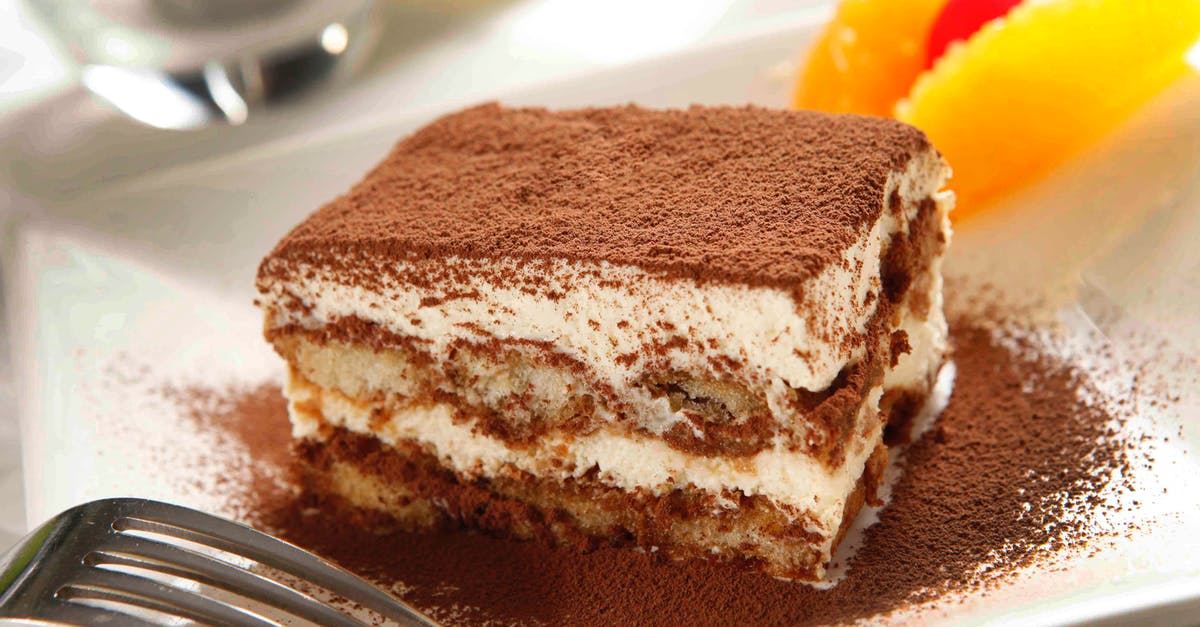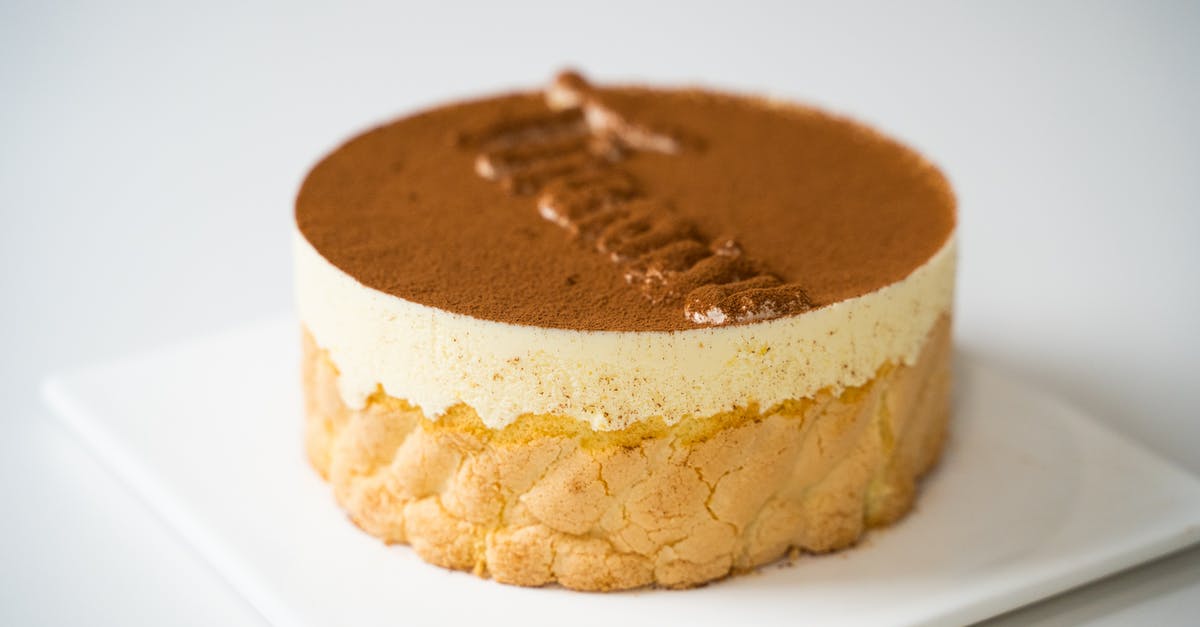Does tiramisu firm up in the fridge?

I am making my first tiramisu, using this recipe from Gourmet (with high ratings on Epicurious). My mascarpone mixture looks terribly soft to me.
As per recipe, I foamed 4 yolks with 80 ml sherry (I had no Marsala) and 95 g sugar at 55°C. The yolks were from recently bought M-sized eggs, there were no L-size in the supermarket. The volume increased a lot, but the foam itself was runny. I mixed in the 450 g mascarpone (the egg mass was still warmish), and it seemed to dissolve (I hope I didn't melt it). The result was still foamy and runny. Then I folded in the 240 g whipped cream. The final consistency is similar to egg whites beaten to stiff peaks. It is a foam, and not runny, but very aerated, and I suspect that, if left on a heap (instead of a bowl), it will flow flat over time. It is very unlike the cream layer in tiramisu I've had before.
Is this normal? Will the cream harden in the fridge? Will the ladyfingers soak up some moisture? (They are coffee-dipped in this recipe). Or should I put in some gelatine to make sure it will keep shape? Or some other thickener? I have xanthan, but don't know how to incorporate it, the mass won't survive a mixer on full speed, and it will clump if not perfectly dispersed.
Best Answer
Your recipe doesn't specify 55°C, and I'd be surprised if 5–8 minutes over barely simmering water only gets that hot. Indeed, checking for sources:
McGee, in On Food and Cooking, says:
When the temperature reaches 120°F/50°C, high enough to unfold some of the yolk proteins, the mix thickens, traps air more efficiently, and begins to expand. As the proteins continue to unfold and then bond to each other, the foam rises into fluffy mounds. The key to maximally light zabaglione is to stop the heating just when the foam teeters on the cusp between liquid and solid. Further cooking will produce a stiffer, denser, eventually tough sponge as the proteins over-coagulate
so that leads to the conclusion that 55°C wasn't hot enough, as it hadn't yet reached "the cusp between liquid and solid".
Hans-Dieter Belitz, Werner Grosch, and Peter Schieberle say in Food Chemistry:
Egg yolk can be whipped into stable foam only at higher temperatures (optimum 72°C), the volume increasing about sixfold in the process. Above the critical temperature, the volume falls and the proteins coagulate. The protein coagulation is prevented by reducing the pH value, e.g., by the addition of acetic acid. This effect is used in the production of highly stable sauces
so that'd imply you want 72°C, or maybe higher due to the acid (wine) present. As a side benefit, that'd also pasteurize the eggs.
In summary, I think you should have cooked it hotter.
I doubt it is going to firm much in the fridge, hopefully it is stable enough to not further liquify.
Pictures about "Does tiramisu firm up in the fridge?"



Does tiramisu thicken in the fridge?
In any case it will thicken a bit as it chills as the mascarpone starts to set in the fridge likewise will the cream and to a much lesser extent the egg yolks.Is tiramisu supposed to be firm?
Tiramisu is an Italian dessert made with layers of coffee soaked ladyfingers (Italian biscuits with a dry spongelike texture) and cream. Look for Italian ladyfingers (or Savoiardi). They are quite hard and often have a sugary top. Not to worry, though \u2014 they soften as the tiramisu sits.Why is my tiramisu too runny?
The other main reasons the mixture would be runny is if other liquid ingredients have been added first, or if the mascarpone has been beaten so much that it has curdled (then you will get water separating out from the cheese curds).Is tiramisu meant to be soggy?
A lot of them have a really intense and overwhelming coffee flavour that dominates the cake, while others are really soggy. Tiramisu isn't supposed to be either. The cookies that make up the \u201ccake\u201d layers of a tiramisu are called Savoiardi, or lady fingers.Tiramisu
More answers regarding does tiramisu firm up in the fridge?
Answer 2
The mixture does indeed set in the fridge. It remains airier than the average tiramisu I've eaten (but I don't know what commercial tiramisu contains, probably not a foam based on raw yolks), but it is firm enough to hold its shape when served. If a piece is forgotten outside overnight, it becomes softer again and runs slightly, but properly stored, it is really very good. Still, I will make a firmer foam next time (by using a higher temp for beating).
Here is a piece from the tiramisu, as you see, it supports its own weight.

Answer 3
I think you could have got away with the 55°C if you had let the yolks cool down before adding the cheese. I usually heat the yolks+sugar in a bain-marie, rather than directly; I never really measured the temperature, but I doubt it would be much higher than that.
I think the further addition of cream probably did more harm than good... next time put only mascarpone, as that thickens the compound a lot.
If the ladyfingers were not too soggy they will definitely soak up some liquid, especially if you leave the tiramisu in the fridge overnight, which has also the benefit of enhancing its flavour.
In any case, don't add gelatine! It will definitely ruin the texture.
I'd rather put the tiramisu for 10-15 minutes in the freezer if it is really runny, but I suspect you will not need it. And even if it is a bit runny you can get away by serving it in small containers so that the ladyfingers will be tight and won't float around.
Answer 4
I don't think there is any thing wrong with what you've made. Tiramisu is a relatively recent dessert (forget about the 'Tuscan trifle' which did not even include mascarpone) created at Harry's Bar in Venice. As such there are many variations: some drier, some boozier, some creamier and some wetter and your recipe may just produce a wetter variety.
Take in mind that it doesn't need to necessarily have a thick, almost pipe-able texture as it (I assume unless you've decided not to) will only be spread in a gratin dish so it's ok if it spreads out a bit. In any case it will thicken a bit as it chills as the mascarpone starts to set in the fridge likewise will the cream and to a much lesser extent the egg yolks.
I do think though that they should have been heated more as at 55C they won't have started to cook at all, for next time perhaps try heating them to around 65-70C to form a true cooked 'sabayon' (or I suppose if it's Italian 'zabione'!). If you really want to thicken it at this stage there's not a lot you can do without deflating the mixture although you could perhaps stick in a few unsmoked or soaked very scarcely lady fingers to soak up the excess liquid. Other than that there's very little you can do that wouldn't ruin the texture so I wouldn't try corn starch or even gelatin.
Sources: Stack Exchange - This article follows the attribution requirements of Stack Exchange and is licensed under CC BY-SA 3.0.
Images: min che, Ofir Eliav, Cats Coming, Ofir Eliav
